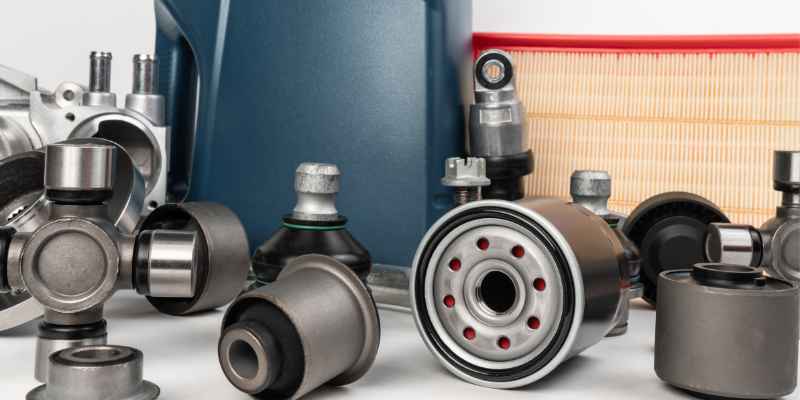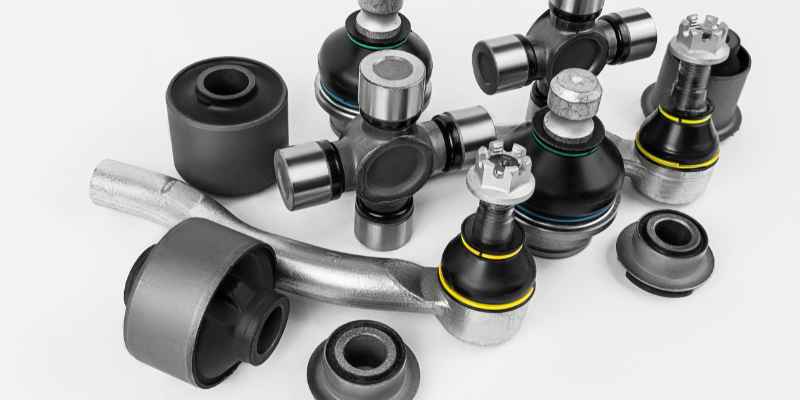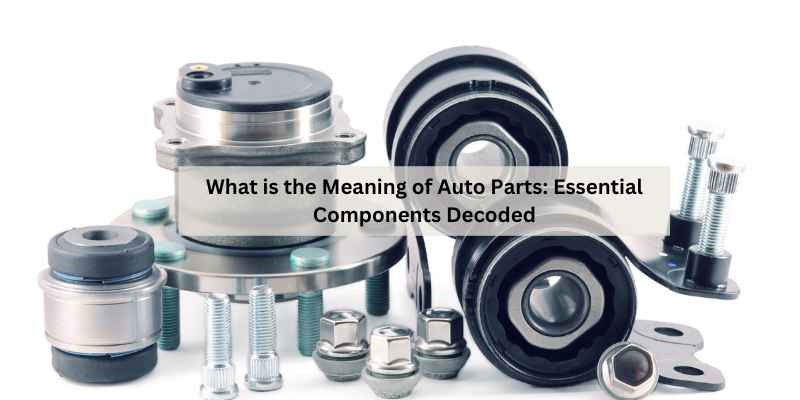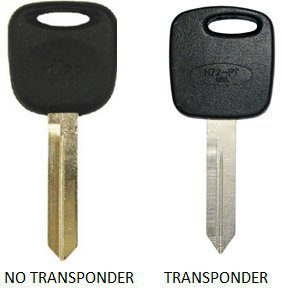What is the Meaning of Auto Parts: Essential Components Decoded
Auto parts are components or systems that make up a vehicle. They range from fasteners to body panels, engines to seat springs.
The auto parts industry focuses on manufacturing, wholesaling, or retailing these parts for motor vehicles. Having knowledge of car mechanics or auto repair experience is beneficial in this field. Understanding the difference between auto parts and spare parts is crucial, as auto parts are not frequently replaced, and spare parts are stocked up for future needs.
Auto parts play a vital role in keeping vehicles functioning properly and efficiently. Whether it’s the engine, transmission, fuel system, or braking components, each auto part contributes to the overall performance and safety of a vehicle.
Decoding Auto Parts
Decoding auto parts involves understanding the components that make up a vehicle, ranging from engine parts to electrical systems. The auto parts industry focuses on manufacturing, wholesaling, and retailing these essential elements for motor vehicles. Understanding car mechanics is crucial for success in this field.
The Basics
Auto parts refer to the component elements and systems that constitute a vehicle. These parts are manufactured separately and are used in the assembly, repair, or maintenance of automobiles.
Categories
Auto parts can be broadly categorized into various groups based on their functionality and usage. Some of the common categories include:
- Engine components
- Transmission and drivetrain parts
- Fuel and ignition systems
- Cooling and lubrication components
- Electrical system parts
- Suspension and steering elements
- Braking system components
- Exhaust system parts
Engine Dynamics

Engine dynamics refer to the internal processes and interactions within an engine that allow it to generate power efficiently.
Cylinder Block And Pistons
The cylinder block houses the cylinders in an engine, where combustion takes place. It provides support and structure to the engine components.
Pistons move up and down within the cylinders, converting the energy from fuel combustion into mechanical motion.
Fuel And Ignition Systems
The fuel system delivers fuel to the engine cylinders for combustion, while the ignition system initiates and controls the combustion process.
Together, these systems ensure the engine receives the necessary fuel and spark for optimal performance.
Transmission Types
When it comes to auto parts, one of the key components that determine a vehicle’s performance is its transmission. There are several types of transmissions, each with its own characteristics and advantages.
Manual Vs Automatic
Manual transmission requires the driver to manually shift gears using a clutch and a gear stick, offering more control over the vehicle’s speed and performance. On the other hand, automatic transmission utilizes a hydraulic system to shift gears automatically, providing a smoother and more convenient driving experience.
Cvt
CVT (Continuously Variable Transmission) is a type of automatic transmission that offers seamless gear shifting without distinct gear steps. It provides improved fuel efficiency and a smoother driving experience compared to traditional automatic transmissions.
Fuel System Functions
Fuel system functions are integral to the performance and efficiency of a vehicle. The fuel system is responsible for delivering the right amount of fuel to the engine, ensuring proper combustion, and optimizing fuel efficiency.
Fuel Injection Mechanics
Fuel injection is a key aspect of the fuel system, as it determines how fuel is delivered to the engine. Modern vehicles utilize electronic fuel injection systems, which precisely control the amount of fuel injected into the engine cylinders, resulting in improved efficiency and performance.
Efficiency And Performance
The fuel system plays a crucial role in the overall efficiency and performance of a vehicle. A well-maintained fuel system ensures that the engine receives the right fuel-air mixture, leading to optimal combustion and power generation. This directly impacts the vehicle’s performance and fuel economy.
Cooling And Lubrication
When it comes to the functionality of a vehicle, cooling and lubrication play a crucial role in maintaining the engine’s performance and longevity. Understanding the significance of maintaining engine temperature and the importance of lubricants is essential for ensuring the optimal functioning of auto parts.
Maintaining Engine Temperature
Proper engine temperature is essential for the efficient operation of a vehicle. Overheating can lead to significant damage to the engine components, resulting in costly repairs. Cooling systems, including radiators, fans, and coolant, are responsible for regulating the engine temperature. Regular inspection and maintenance of these components are imperative to prevent overheating and ensure the smooth operation of the engine.
Importance Of Lubricants
Lubricants are vital for reducing friction and wear between moving parts within the engine. They minimize heat generated due to friction, thereby enhancing the overall performance and durability of the engine. Regular oil changes and proper lubrication of engine components are essential to prevent premature wear and damage to the engine.
Electrical System Essentials
When it comes to the electrical system of a vehicle, there are several essential components that play a crucial role in ensuring smooth and efficient operations. From providing power to the various electrical systems to initiating the engine, the electrical system is indispensable for the functioning of a vehicle. In this section, we will delve into the key electrical system essentials, focusing on the subheading: Electrical System Essentials.
Batteries And Starters
The batteries and starters are vital components of a vehicle’s electrical system. The battery serves as the primary power source, supplying electricity to start the engine and power the vehicle’s electrical components. On the other hand, starters are responsible for initiating the engine’s combustion process, providing the initial mechanical energy to start the vehicle.
Lighting And Signaling
Lighting and signaling are integral aspects of a vehicle’s electrical system, ensuring visibility and safety on the road. The lighting system comprises headlights, taillights, brake lights, and indicators, all of which are essential for illuminating the vehicle and signaling its movements to other drivers on the road.
Suspension And Steering
The suspension and steering systems in a vehicle work together to provide a smooth and controlled driving experience. Proper maintenance of these systems is crucial for vehicle safety and performance.
Shock Absorbers
Shock absorbers are vital components of the suspension system that help control the impact and rebound movement of the vehicle’s springs. They play a key role in ensuring a comfortable ride and maintaining stability on the road.
Wheel Alignment
Wheel alignment refers to the adjustment of the angles of the wheels so that they are perpendicular to the ground and parallel to each other. Proper wheel alignment is essential for optimal tire performance and even tire wear.
Braking System Components
The braking system is a critical component of any vehicle, ensuring safe and reliable operation. Understanding the various braking system components is essential for maintaining and repairing a vehicle’s braking system. Let’s explore the key elements of the braking system, including disc and drum brakes, as well as the anti-lock braking system (ABS).
Disc And Drum Brakes
Disc brakes are a type of braking system that uses calipers to squeeze pairs of pads against a disc or rotor to create friction, which slows down the vehicle. This design offers efficient heat dissipation and excellent stopping power, making them a popular choice for modern vehicles.
Drum brakes, on the other hand, feature brake shoes that press against the inner surface of a drum to slow or stop the vehicle. While drum brakes are less common in modern vehicles, they are still used in some rear brake systems due to their simple and cost-effective design.
Anti-lock Braking System (abs)
The anti-lock braking system (ABS) is an advanced safety feature that prevents the wheels from locking up during braking, allowing the driver to maintain steering control. ABS operates by modulating the brake pressure to each wheel during sudden stops or low-traction conditions, reducing the risk of skidding and improving overall vehicle stability.
The Exhaust Process
Auto parts encompass the various components and systems that form a vehicle, ranging from fasteners to body panels and from the engine to seat springs. The exhaust process is an essential element of auto parts, ensuring the efficient removal of harmful gases from the vehicle’s engine.
The Exhaust Process is an important aspect of a vehicle’s operation. It is responsible for releasing harmful gases produced by the engine out into the environment. This process is made up of several components, including the Emission Control system and Exhaust System Parts.
Emission Control:
The Emission Control system is responsible for reducing the amount of harmful pollutants that are released into the environment. This system includes the catalytic converter, which converts harmful gases into less harmful ones before they are released into the atmosphere. Other components of the Emission Control system include the oxygen sensor, which measures the amount of oxygen in the exhaust, and the EGR valve, which recirculates some of the exhaust gases back into the engine to reduce emissions.
Exhaust System Parts:
The Exhaust System Parts include the exhaust manifold, which collects the gases from the engine, and the muffler, which reduces the noise produced by the engine. Other components of the Exhaust System include the resonator, which further reduces noise, and the tailpipe, which releases the gases into the environment.
It is important to ensure that all Exhaust System Parts are working properly to ensure that harmful emissions are not released into the environment. Regular maintenance and inspections can help to identify any issues with the Exhaust System and ensure that it is functioning properly.
In conclusion, the Exhaust Process is a crucial aspect of a vehicle’s operation that is responsible for releasing harmful gases produced by the engine out into the environment. The Emission Control system and Exhaust System Parts play important roles in this process and should be regularly inspected and maintained to ensure proper functioning.
Auto Parts Vs Spare Parts
In the automotive industry, it’s crucial to understand the distinction between auto parts and spare parts.
Definitions
Auto Parts: Components and systems that make up a vehicle.
Spare Parts: Parts not frequently replaced, typically ordered through manufacturers.
Differences
Auto parts are essential elements of a vehicle, whereas spare parts are backups that are not regularly replaced.
Inventory management for auto parts involves stocking commonly needed items, whereas spare parts are ordered as needed.
Efficient inventory management ensures that auto parts are readily available, reducing downtime for repairs.

Frequently Asked Questions
What Are The Automotive Parts?
Automotive parts are components that make up a vehicle, such as the engine, transmission, fuel system, and brakes.
What Is Auto Parts Work?
Auto parts work refers to the manufacturing, wholesaling, or retailing of parts for motor vehicles. A general understanding of car mechanics or experience in auto repair can be helpful in this industry. Auto parts can range from small fasteners to large body panels, and include components such as the engine, transmission, fuel and ignition systems, cooling and lubrication, electrical system, suspension and steering, braking system, and exhaust system.
What Is The Definition Of A Part Of A Vehicle?
A part of a vehicle is any component of a vehicle, including the frame or any attached piece.
What Is The Difference Between Auto Parts And Spare Parts?
Auto parts are components not frequently replaced, while spare parts are kept in stock for emergencies.
Conclusion
Auto parts are essential components that make up a vehicle’s structure and functionality. Understanding their significance and role is crucial in the automotive industry. Whether manufacturing, wholesaling, or retailing, having a grasp of auto parts is key to success. Embrace the world of auto parts!







